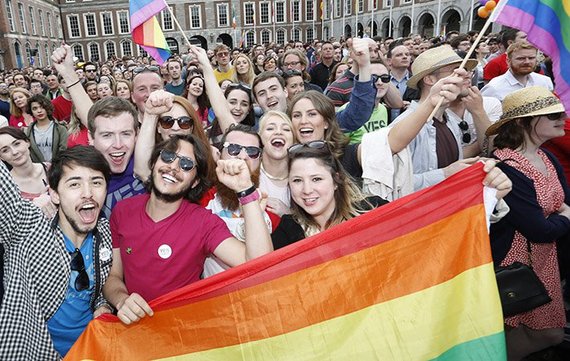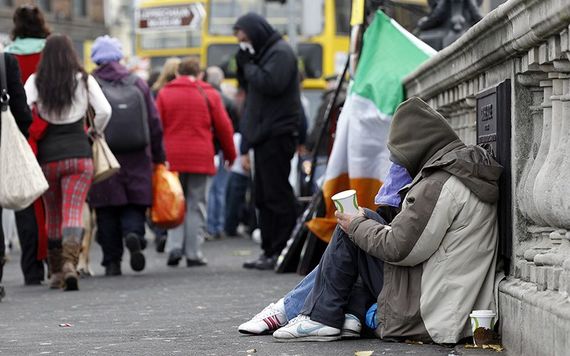Tourism, transport, and homelessness statistics on the Irish population: interesting facts and figures about Ireland you need to know.
The Central Statistics of Ireland has released an in-depth report on the 2016 Irish census and we could spend all day reading up on the facts, figures and statistics of Irish life. Everything from the effects of tourism to homelessness in the country is covered in this one interesting document.
Main census facts and statistics about Ireland:

Graph of the main statistics from the Irish census 2016.
The population of the Republic of Ireland on April 26, 2016, was 4,761,865.
There were 1,218,370 families in the State on census night, which is a 51% increase since 1996.
The average number of children per family fell markedly between 1996 and 2006 before leveling off in 2011 and 2016.

Image: CSO.
The 535,475 non-Irish nationals living in Ireland in April 2016 came from 200 different nations.
Polish nationals were the largest group of 122,515 persons, followed by 103,113 UK nationals and 36,552 Lithuanians.
Just twelve nations account for 73.6% of the total non-Irish national population.

Image: CSO.
Read more: Where are the most Irish people in the US? Census reveals all
Interesting facts and figures about Ireland:

How has the same-sex marriage vote had an effect in Ireland. Image: RollingNews.ie.
Drogheda in Co. Louth is not just one of the oldest towns in Ireland but it also remains the largest with a population of 40,956.
14,330 people moved to Dublin from another county in the year to April 2016.
26% of people who had moved in the year to April 2016 had relocated to another county.
In April 2016, 65.6% (1,229,966) of those commuting to work either drove or were passengers in a car.
However, 56,837 people cycled to work, an increase of 43% since 2011.

Image: CSO.
In 2015 in Ireland, 1,196 sets of twins were born, 31 sets of triplets and one set of quadruplets.
There were 22,626 marriages in 2016, including 1,056 same-sex marriages.
Ireland’s total imported energy dependency was 69% in 1990 but was 85% in 2014.
Read more: Ancestry seekers beg Ireland to release 1926 census now instead of 2027
What is the age profile of Ireland?

Ireland's population is getting older. Image: iStock.
The average age for Irish nationals increased by 1 year to 37.7 years between 2011 and 2016.
Ireland’s population has been getting steadily older since the 1980s. In Census 2016, 37.2% were aged 45 and over, compared with 34.4% in 2011 and 27.6% in 1986.
The 65 years and older age group saw the largest increase in population since 2011, rising by 102,174 to 637,567, a rise of 19.1%.
Where is Ireland living?

Image: iStock.
Almost 10% of the population of Ireland is living in accommodation with less than 1 room per person.
458,874 people aged 18 and older were living with their parents. This decreased to 23,571 from 25 years old onward.
There were 140,120 vacant houses in Ireland and 62,148 vacant holiday homes.

Image: CSO.
Tourism facts and figures about Ireland:

Image: Tourism Ireland.
In 2016, 9.6 million overseas trips were made by non-residents to Ireland compared to 8.6 million trips in 2015, an increase of 10.9%.
The average length of stay in Ireland by all overseas travelers fell from 7.1 nights in 2015 to 6.9 nights in 2016.
Over 7.6 million outbound trips were undertaken by Irish residents in 2016.
The average length of stay on outbound trips was 7.4 nights, varying from 6.4 nights within the European Union, 12.7 nights in North America and 22.3 nights in Australia, New Zealand and Oceania.
Irish residents took almost 9.3 million domestic trips in 2016. The average length of stay for domestic trips was 2.7 nights, resulting in a total of 25.4 million bed nights.
What is the main religion in Ireland?

Image: iStock.
Catholicism is still the largest religion in Ireland but the numbers are falling. Catholics made us78.3% of the population in April 2016, compared with 84.2% five years previously.
Persons born outside of Ireland comprised 12.0% of the country’s total Catholic population.
“No religion” came in second, increasing by 73.6% to 468, 421 people.
Read more: Belief in God drops sharply among Irish new census figures show

Image: CSO.
Facts and figures about homelessness in Ireland:

Image: RollingNews.ie .
On census night there were 6,906 homeless people in Ireland, 1,846 of whom (27%) were under 18.
The Dublin region accounted for 73% of homeless people.
123 people were sleeping rough on census night. Of these, 102 were in Dublin.
Read more: Can you guess the ratio of Irish Americans to the number of Irish?

Image: CSO.
The average age of the homeless population was 31 years compared with 37 years for the general population.
You can read more on the census facts and figures from Ireland here.
What do you think is the most interesting fact or figure from the Irish census? Let us know in the comments section, below.




Comments